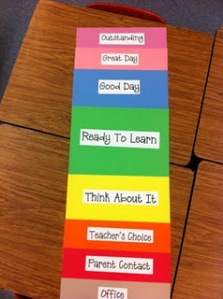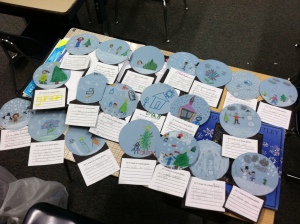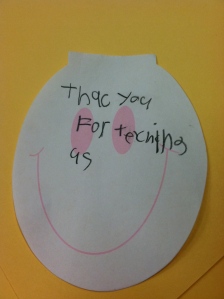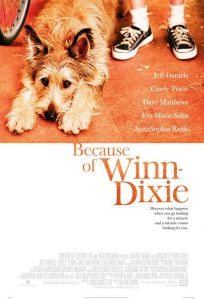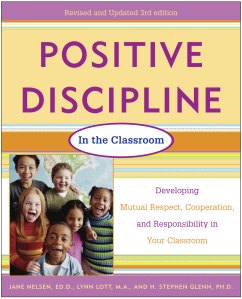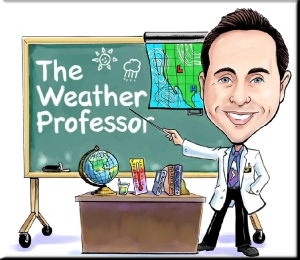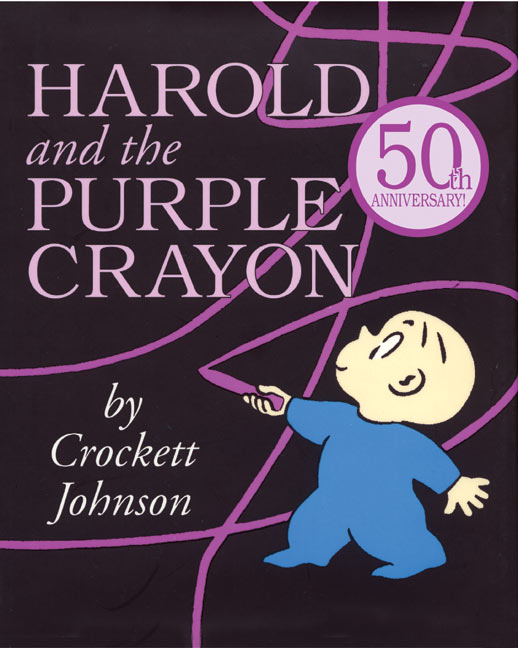Student Teaching
Student teaching has been consuming my life from August 27th! I have had such an amazing experience so far and I can’t believe there are only 18 days left! It’s crazy to think that in a few short weeks I’ll be out in the world as an official educator. Hopefully I can find a job!
I have learned so much over the past 11 weeks, especially with technology. The classroom I am in has a promethean board and I have been able to create several interactive lessons. When I figure out how to post them I will. Fourth grade is so much fun and I have enjoyed some time in the primary wing for my guest lessons.
Once things start to slow down, I will update all of my ideas from student teaching. You really do come a long way in 15 weeks!
Classroom Management Idea
Tonight I came across Once Upon A Teaching Blog. I found a classroom management idea that I really like and want to try with my fourth graders. It is a clip chart that is leveled with Outstanding, Great Day, Good Day, Ready to Learn, Think About It, Teacher’s Choice, Parent Contact, and Office. Each student would have a labeled clip and start on “Ready to Learn.” If a student has excellent behavior or misbehaves, his or her clip will move on the chart.
You can find the blog here.
Quick One!
Two quick things!
I was looking this evening for some lesson plans and I came across two websites:
Have Fun Teaching and IXL
I haven’t done too much exploring; however, both of these websites stood out to me. Have Fun Teaching has a lot of songs, videos, and activities for students. While researching ideas for a verb lesson I found a verb rap on this site. I didn’t look at IXL, but I did want to bookmark it for future reference. It is a math website that is separated by grade level and has state standards attached. I “practiced a skill” on the site and it could be useful in the classroom.
Fabulous Weather
Once again it has been a while since I’ve updated! I’ve been busy teaching second graders and I just finished up my first unit plan! The topic was Weather and we covered clouds, the water cycle, snow, tornadoes, and rainbows. I was really happy with everything and I got really good evaluations from my cooperating teacher and university supervisor. It was a good week!
Monday was cloud day! The students learned about the four main types of clouds: cumulus, stratus, cirrus and cumulonimbus. The lesson began by reading a “Weather Watcher” book on Clouds. The students then completed a graphic organizer as we took an in-depth look at clouds on the Scholastic Weather Watcher. The students looked at each type of cloud and made observations. Then I would read about each cloud to the students. Once the graphic organizer was completed, the students used it to create cotton ball clouds. I was impressed with how they turned out! A few students did struggle with differentiating the different types of clouds. I think more teacher-directed instruction would have helped these students along with more structure for the cloud activity.
Tuesday the students learned about the Water Cycle. I had students work in small groups to create rain in a jar. I began by reviewing the cloud lesson from the day before and making the connection that the ice cubes represented the cloud. As the students watched the jars I gave some teacher-directed instruction talking about evaporation and the water turning to vapor. The the students lifted the lid to see the rain drops gathering and we talked about the vapor turning back into water (condensation). We also discussed what would happen when the water drops got too heavy and the students guessed they would fall as rain (precipitation). After the students lifted the lid we gathered in the front of the room to learn the water cycle boogie. This song/dance outlines the three main parts with motions to aid in student memory of the water cycle. This is a difficult concept for second grade and the vocabulary is difficult so the song was a fun way to assist the students in learning. They LOVED it! I gave each student an image of the water cycle and a copy of the water cycle boogie to keep.
Wednesday we learned about snow. The purpose of the day was basically to review the concept of the water cycle and that when the temperature is cold enough the rain is snow. The students watched a video clip of the Blizzard in NYC over Halloween weekend. I also did a read aloud of Snowflake Bentley to get the students motivated. They love being read to so they really enjoyed the story. For the lesson we reviewed the water cycle boogie and then we created real and paper snow globes for each student. I pre-cut all of the pieces to the paper snow globes. I made a blue circle, black square and “If I lived in a snow globe” for each student. To make the snow globes I bought plastic mason jars from Walmart and I also bought cheap little snow man ornaments (some pink and some blue) to glue to the lid. I allowed each student to add the glitter and water and to twist on the cap with the snowman of choice. Then I used the hot glue gun to seal the rim to avoid any leaks and this way they could not be opened on the bus.
Thursday was Tornado day! We started with another video clip, this time of the Tuscaloosa tornado in the spring. The students were really interested in the clip and asked to watch it again. Following the video clip I read a short Weather Watcher book on Wind allowing students to activate some background knowledge. Then I used the Scholastic Weather Watcher Website to learn more about Tornadoes as the students filled out a “Gist” graphic organizer that I created. Following the completion of the graphic organizers, I had the students return to their seats. I had created “Tornadoes in Jar” for the students to look at to see how the tornadoes really work. The students really enjoyed it!
Finally Friday! It was rainbow day! We did a review of the week and what we learned. We also reviewed storms/tornadoes to lead into the rainbow lesson. I read A Rainbow of my own to the students as the motivation. Then we read about rainbows from Weather Wiz Kids. Following the discussion I had the students create their own rainbows using fruit loops. Surprisingly.. they didn’t eat them! I also gave each student a Roy G. Biv card to help them remember the colors of the rainbow. Today was an easy/fun day to conclude the weather unit for the students.
If I had more time I would have done the introductory and culminating activity. As an introduction I would have read Weather Words and What they mean by Gail Gibbons and talked about the basics of weather. This also would help to see if the students have any previous knowledge on the topic. As a culminating activity I wanted to have a weather day. The idea was for students to dress up as meterologists and give a weather report to the class in small groups. Too bad there wasn’t more time! Oh, here was my bulletin board in the hallway outside the classroom:
This week I also implemented my own classroom management strategy. This particular group of second graders is chatty so I created “quiet critters.” The critters sit on my desk in a jar and when the students are working quietly they come out and sit on the desks. However, if it gets too loud the critters go back in the jar because they are scared. The students really liked them and it seemed to work well. I made the critters with some pom pom balls and googly eyes that I purchased from Walmart.
It was a good first full week and I learned a lot. I even got a few of these that warmed my heart and reminded me why I love the profession:
Because of Creativity
So far, I have managed to get through about half of Because of Winn-Dixie. As I read through this book I can vision so many things to do in a classroom. When I was in elementary school I never got the chance to read this book. I really like it so far and I am excited to read the rest. Even though I didn’t have the opportunity to read this as a child, I think it is a great book for children to read and to use in the classroom.
What I think is important about these books is the way we make them memorable for students. I remember in fifth grade another language arts class read Bridge to Terebithia. I remember being incredibly jealous of the fun things they got to do. While my class did some dumb jelly bean race because we were the “high” group, the middle group got to make their own Terebithia with boxes and paper AND Christmas lights right in the middle of the classroom and no one else was allowed in it. Did I mention it was in my homeroom? So I got to look at it every single day, wondering what it was like inside. Jealous much? I still might be bitter I never got to go inside.
I went browsing the web and on the scholastic website I found a Winn-Dixie unit plan. The objectives were:
- Create a scrapbook featuring characters from the story
- Play a reading comprehension maze game based on the story’s plot and themes
- Listen and read along with a slide show of drafts narrated by the author
- Communicate with the author through a moderated chat
- Learn about the author and her writing process
I like how this unit plan has a variety of activities and things that allow students to express their creativity, which ultimately keeps them engaged. The variety also helps to meet different students needs. Not to mention, with an activity like a scrapbook, you have a lot of flexibility and you can modify the activities in a way that best meets your students needs. In this video, a group of second grade students created a book trailer for the story.
As teachers, I think it is important to use pieces of literature and find activities for our students that make their reading memorable and valuable. When you ask any student what they remember from elementary school, it is likely that you will find most will tell you about a play, or some project, or something in the classroom. Something that was exciting and inventive. Something….. FUN! I don’t know why we feel the need to bog students down with worksheets and tests. While I do think there is a time and place for that, we need to be creative and encourage our students to do the same. With books like Winn-Dixie, there are thousands of possibilities and we get to use our own imagination and creativity along the way.
My goal as a future teacher is to find a way to effectively teach my students the material that they need to know while making it enjoyable for them as well. I want to be THAT teacher.. “Do you remember in third grade when we did that with Miss Young..?”
Positive Discipline in the Classroom
For my Pedagogy II class we are required to do a presentation on a chosen theorist. I am currently working with my partner to research Jane Nelson and Lynn Lott’s “Encouragement and Support.” We have to design a 15 minute interactive presentation and create a handout for our fellow classmates outlining the key points of this theory.
I think this theory brings up an important, maybe controversial, topic of discipline in the classroom. Jane Nelsen and Lynn Lott support a positive environment and cutting out punishment in classrooms. In order to supplement my presentation I ordered their book, Positive Discipline in the Classroom, and started reading their ideas on how to be effective.
I have always been an advocate for encouraging and supporting good behavior inside the classroom. Lynn Lott stated that, “to create a nurturing, respectful environment that is conducive to learning teachers must take the first step to eliminate humiliation and punishment. Rudolf Dreikers says, “Children need encouragement like plants need water.” As teachers I feel it is important to support this theory in order to have a positive and safe environment for our students.
I think teachers often get caught up in the misconception that punishment and humiliation makes students want to work harder. I personally think this just puts your classroom into a bad state. It won’t push students to do better; instead, they will just be more careful to not get caught and hold themselves back. It is extremely detrimental to students learning and development if your classroom is based around punishment.
Nelsen and Lott encourage teachers to remove all punishment and humiliation from the classroom setting because it is harmful to students. By removing these negative practices, students are more likely to thrive in your classroom. They will enjoy the freedom of being themselves and not being afraid of getting caught making the wrong move.
Nelsen and Lott state that, “a Positive Discipline classroom is a process of putting together parts of a puzzle.” The book contains this diagram:
Each of these components is important to creating a positive environment in the classroom. If you create an ineffective classroom environment, your students will not be able to grow and develop as much as they would in a positive classroom environment. One of the main parts to the puzzle is using encouragement. This needs to be a part of our classroom each and every day. Encouragement is vital for students to thrive. Also, some students may be lacking encouragement at home and it is important for us as teachers to create that safe and nurturing environment in school for them.
So far I have really enjoyed this book and I think it contains a lot of great ideas for the classroom. I am glad that my partner and I chose to research these two theorists. I believe that their work will influence my classroom and be beneficial for me and my students. It is important to realize what students need in the classroom in order for them to work at their highest potential. Implementing these theories into the classroom can be the missing ingredient that takes learning to a whole new level for your students.
Until now I haven’t had much experience in creating a positive classroom environment. I hope that in my PSII experience and in my student teaching I will have the opportunity to see how this works inside a successful classroom. I know that this type of environment most likely takes time, practice, and experience to develop. My goal is to start off as best as I can and improve as I get further into my teaching career.
Fabulous Weather Day
For my science methods course we had to find a journal article from NSTA’s Science and Children Journal. When researching I found an article from January 2007 titled, “Fabulous Weather Day.”
This article talks about first grade classes in Kensington, Maryland. Years ago the teachers started creating a weather day for their students. The students did a weather unit leading up to weather day and it was a fun/exciting way for them to close the unit. Over the years weather day has grown and become that activity in first grade that everyone waits for.
I will always remember in Kindergarten we did a similar activity. We had a science day where all four homerooms rotated to each teacher and did a science activity. My homeroom talked about butterflies so we used coffee filters, coloring and clothes pins. Next door in Mrs. Caroff’s homeroom we made clay volcanoes and made them erupt. Now.. I was in Kindergarten 16 years ago and I still remember the activities I did that day! All that time went by and I could still tell you about it. This is a prime example of how meaningful activities will leave a long lasting impression on students.
Another example: a student teacher in my second grade classroom taught us the water cycle boogie to help us remember the water cycle. At the ripe age of 21 I can still sing the song and do that dance to tell you exactly how the water cycle works.
I could never stress how important it is to find these types of meaningful activities to help students learn. I will admit at the beginning of the semester I wasn’t real thrilled about having another science class. However, I forgot how fun it could be to learn science. In high school and early college years I learned to hate science because of the demand and I didn’t always understand it. When I look back on those classes we never did anything meaningful or enjoyable. Therefore, I don’t remember much of anything.
In elementary classrooms we want our students to love learning. I hope that I will be able to create this type of environment in my own classroom. We need to include hands on activities, experiments, videos, field trips, virtual experiences.. anything that makes learning more exciting and meaningful! While in science I had an idea to create my own personal “magic school bus” in my classroom. To take my students to another place beyond that classroom without going anywhere at all.
I hope in my PSII experience I will get to implement some of these ideas and improve as a teacher. When I leave that school, I want the students to have the same memories about me as I did about my second grade student teacher.
Welcome Letter
Another recent topic in my classes has been parent-teacher communication and making students feel welcome in your classroom. For Pedagogy, I was asked to compose a mock welcome letter that could be sent to students and/or parents prior to starting the school year. I think keeping in touch with parents is critical to being an excellent teacher. Parents can be your biggest advocate and developing a relationship with them is beneficial to your students.
Here is the letter I created on a school days letterhead:
I think creating a letter like this is a great way to make a great first impression on parents and students. It shows that you are caring and willing to work with them. I am a true believer that parent communication can either make or break you.
When searching the New Teacher Survival Guide on Scholastic.com I found an article with 5 Keys to Successful Parent-Teacher Communcation:
- Begin the year by explaining how and when you’ll keep in touch with them.
- Never feel pressured to make an important decision, evaluation, or assessment during a parent conference or conversation.
- Let parents know they can trust you.
- Assure parents that you will inform them immediately about any concerns you might have with regard to their child.
- When presenting a concern to parents, ALWAYS be ready to explain what strategies you’ve already used to address the issue and what new strategies you are considering.
Working with parents can be tough. However, if you find a way to welcome them and make a good first impression by showing them you care about their child, you will be set for the rest of the year.
Communication
Well, it is that time again… back to school!
Last week I headed back into the classroom at IUP. I was so happy to be back in class with my fellow aspiring teachers. Being at IUP, on the 3rd floor of Davis hall, is like a second home to me. Between my classmates and professors it feels like another family. As excited as I am to start teaching, I sure will miss being in school.
This semester is extremely busy. I am taking:
- Pedagogy II
- Teaching Science
- Teaching Social Studies
- School Law
- Pre-Student Teaching II
- Reading in the Content Area
Busy Busy Busy!
I’m not going to lie.. I love being busy. When I’m not I get bored. For some reason I feel better when I realize there is not enough time in a day.
In two of my classes this week we did communication exercises. Yesterday our class broke off into pairs and was given two sets of tangrams. Each bag contained 7 matching tangrams. The task was for one partner to build a shape with all 7 of their tangrams. Then, with a divider in between the partners, they had to describe their shape so their other partner could build the matching shape. The twist? The partner doing the building could not respond. It doesn’t seem so hard, but it turned out to be extremely difficult. Here is what my partner and I did:

We each had one small error, but overall we did pretty well! The purpose of the exercise was to stress the importance of communication. Truth is we communicate in our profession every single day and we have to do it well. We are communicating ideas to students, to other teachers, to principals, to school board members.. everyone! It is so important that we be aware of our communication skills and how we can improve them to be better teachers.
In Kappa Delta Pi’s New Teacher Advocate, there was an article discussing the importance of communication. You can read that article here. It starts off with a story that represents poor communication and how that affected a student and family. As educators we need to think about everything we say. For a while it may take some extra effort, but over time practice will improve this skill.
Being active in the world of coaching and being within the schools I have had some practice with effective communication. I am still working to improve that and it gets better each day. This activity reminded me how important communicating is even though we do it each and every day. Words are extremely powerful and I believe they can either make or break you. I want to work to be the best communicator possible and I know that will be a great help to me as a future teacher.
Harold and the Purple Crayon
Tonight I was sitting at dinner with some friends (we’re on vacation) and being normal 18-22 year old’s we spent our time coloring before our food came. Someone had asked for a purple crayon and my old childhood favorite Harold and the Purple Crayon came into conversation. The only person that remembered the book was my brother.
I remember when our librarian, Mrs. Horn, read this book to when I was a bubbly kindergarten student. I am almost positive I made my parents buy me this book shortly after.
I like this book as a tool in an early childhood classroom. You could replicate what Harold does in your own classroom. As an extension to the book you can have your students pick a crayon and color their own world. It allows children to use creative thinking and they would have the freedom to create their very own world.
If I ever get the opportunity to teach in a Kindergarten or first grade classroom I would love to use this book as a fun activity for my students.
